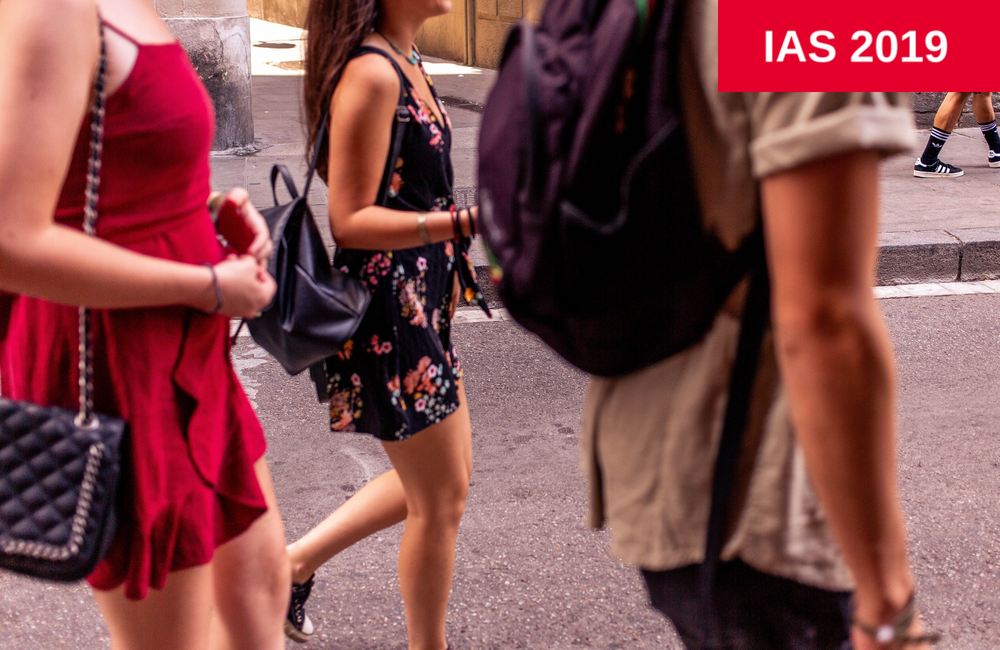
Young adults with vertically transmitted HIV and hepatitis C virus (HCV) co-infection can easily be cured with direct-acting antivirals (DAAs), but some already have advanced liver damage by the time they are treated, researchers reported at the 10th International AIDS Society Conference on HIV Science (IAS 2019), last week in Mexico City.
Presenter Itzíar Carrasco of Hospital General Universitario Gregorio Marañon in Madrid said that 11 million people with hepatitis C worldwide are younger than 15 years of age, including 5 million with active infection, although the European Association for the Study of the Liver (EASL) puts the number closer to 3.5 million. The leading route of HCV infection for children is vertical transmission (mother to child) during gestation or delivery, although horizontal transmission is more common among adolescents and young adults.
Over years or decades, chronic HCV infection can lead to advanced liver fibrosis, cirrhosis, hepatocellular carcinoma and the need for liver transplantation. Some research suggests that cirrhosis develops more rapidly in children with HCV. For example, a study of sofosbuvir/ledipasvir (Harvoni) in children age 6 to 11 years found that some already had cirrhosis despite their young age. Co-infection with HIV increases the likelihood of vertical HCV transmission, HCV persistence and more aggressive liver disease progression.
Almost all adults – including those living with HIV – can now be cured with DAAs taken for 8 to 12 weeks, but the approval of these medications for paediatric patients has lagged. Sofosbuvir/ledipasvir is approved in Europe and the United States for people aged 12 and up with HCV genotypes 1, 4, 5 or 6, while sofosbuvir (Sovaldi) plus ribavirin is indicated for those with genotypes 2 or 3. Studies have shown that sofosbuvir/ledipasvir is also effective for children aged 6 to 11 years and those aged 3 to 5 years. Glecaprevir/pibrentasvir (Maviret), a pangenotypic regimen that works against all HCV genotypes, is also approved for those aged 12 and up. However, no DAAs are currently approved for children under 12.
Carrasco and colleagues evaluated DAA treatment in young adults with vertically acquired HIV and HCV co-infection in the Spanish National Cohort of Pediatric Patients with HIV (CoRISpe) who continued follow-up after transitioning to adult care (the FARO cohort).
This analysis included 27 people who received hepatitis C treatment with DAAs; 56% were young women and the median age was 23 years, with a range of 21 to 27. At the time they started HCV treatment, all were on antiretroviral therapy using a wide variety of regimens and 88% had suppressed HIV viral load. The median CD4 count was high, at 618 cell/mm3, but 22% had stage C advanced HIV disease.
Nearly two-thirds of the participants (63%) had HCV genotype 1, followed by genotype 4 (33%) and genotype 3 (4%). Prior to treatment initiation, 56% had mild or absent fibrosis (stage F0-F1), 15% had moderate fibrosis (stage F2), 26% had advanced fibrosis (stage F3) and 4% had cirrhosis (stage F4).
Although most were starting hepatitis C treatment for the first time, six had previously used interferon-based therapy. Fifteen were treated with sofosbuvir/ledipasvir; two each with elbasvir/grazoprevir (Zepatier), ombitasvir/paritaprevir/ritonavir (Viekirax) and Viekirax plus dasabuvir (Exviera); and one each with sofosbuvir/velpatasvir (Epclusa) and glecaprevir/pibrentasvir.
All of the young adults achieved sustained virological response (SVR), or undetectable HCV at 12 weeks after completing treatment, which is considered a cure. However, despite successful treatment, just 29% saw improvement in their liver disease stage after treatment, while 57% stayed the same and 14% had worsening fibrosis.
EASL HCV treatment guidelines recommend that adolescents aged 12 and older with genotypes 1, 4, 5 or 6 should be treated with sofosbuvir/ledipasvir, while those with genotypes 2 or 3 can use with caution other regimens approved for adults. For children under 12, treatment should be deferred until DAAs, including pangenotypic regimens, are approved for this age group.
However, these study findings indicate that it is important to treat children with hepatitis C early, before they develop advanced liver disease. "To speed up access to new DAA treatments for paediatric populations is an urgent need," the researchers concluded.
Carrasco I et al. Response to direct acting antivirals in vertically HIV/HCV co-infected youths. Tenth International AIDS Society Conference on HIV Science (IAS 2019), Mexico City, abstract WEAB0205, 2019.

